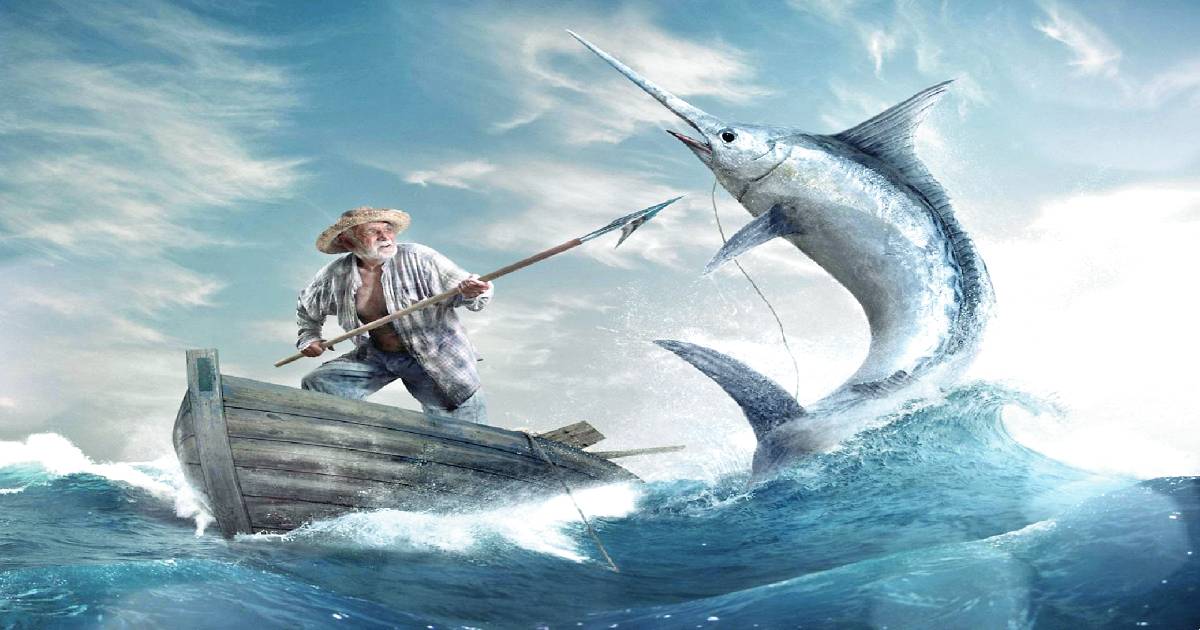Latest News
THE OLD MAN AND THE SEA

The last novel Ernest Hemingway saw published, ‘The Old Man and the Sea’ had proved itself to be one of the most enduring works of American fiction. Using the simple, powerful language of a fable, Hemingway takes the timeless theme of courage- in the face of defeat and personal triumph won from loss and transforms it into a magnificent 20th Century classic. Written in 1952, this hugely successful novel confirmed Hemingway’s power and presence in the literary world. It got him the Pulitzer Prize in 1953 and the Nobel Prize for Literature in 1954.
Hemingway was known for his larger-than-life personality- due to his passion for war (he was injured twice), bullfighting, fishing and big- game hunting. He survived two plane crashes! He viewed the world of war as complex, filled with moral ambiguities and full of unavoidable pain, hurt & destruction. To survive in such a world, and to emerge victoriously, one must conduct oneself with honour, courage, endurance and dignity- a set of principles that came to be known as ‘The Hemingway Code’. This was the theme established in ‘The Old Man and the Sea’. It’s a perfectly crafted story, a unique and timeless vision of the beauty and grief of man’s challenge to the elements in which he lives. “The old man knew he had one good fight left in him- so did Hemingway- they both wonas we gain insight into what it means to struggle- to fight against long odds, & succeed! Only to be beaten at the last moment…”
‘The Old Man and the Sea’ is the story of an epic struggle between an old, seasoned, Cuban fisherman and the greatest catch of his life. For 84 days, Santiago had set out to sea and returned emptyhanded. Terming him unlucky, the parents of his young, devoted, apprentice and friend- Manolin, forced the boy to leave the old man for more prosperous fishing boats. Santiago is a mentor to the boy, who cherishes the old man and the life lessons he imparts. “There are many good fishermen and some great ones. But there is only one you.” He does his best to help and support Santiago with the boat, supplies, food, bait etc.
With age and luck now against him, Santiago knows he must row out “beyond all people”, away from land and into the Gulf Stream, “where one last drama would be played out, in an empty arena of sea and sky”. The old man hooks a Marlin fish- which is even bigger than his boat. All alone, he is tested to the limits as he works the line with bleeding hands, to bring his prized catch close enough to kill with a harpoon. He struggles with the fish for three days, admiring its strength, dignity and faithfulness to its identity- empathizing with it. He finally reels the Marlin in and lashes it to the boat. As he sets sail for home, the continuous attack by multiple sharks begins. He fights off and kills many, but cannot save his precious Marlin. He reaches the shore with only the skeleton, head and tail of the great fish. Through his struggle, Santiago demonstrates the ability of the human spirit to endure hardship and suffering to win. It is also his deep love and knowledge of the sea, in its impassive cruelty and beneficence, that allows him to prevail. The essential physicality of the story- the smells of tar & salt & fish blood, the cramp & nausea and blind exhaustion of the old man, the terrifying death spasms of the great fish- is set against the ethereal qualities of dazzling light and water, isolation, & the swelling motion of the sea. And through it all the narrative is constantly tugging, unreeling a little more, and then pulling again, all in tandem with the old man’s struggle.
“The best story Hemingway has written- no page of this beautiful master-work could have been done better or differently”. It is unsurpassed in Hemingway’s oeuvre. Every word tells & there is not a word too many. It is a story that demands to be read in a single sitting.





















